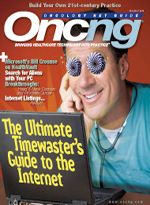5 Questions with... Bill Crounse, MD
We caught up with MDNG Healthcare IT Advisory Board Member Bill Crounse, MD, at the 3rd Annual World Healthcare Innovation and Technology Congress, held this past December 9-11 in Washington, DC.
1 What new ideas from key opinion leaders in healthcare have impressed you the most?
The commoditization of boutique or concierge medicine. [Crounse points to Jay Parkinson, MD, who is seated several tables away from us.] Look at Jay Parkinson. He started a niche medicine service. He realized that this is an era in which many younger workers are uninsured. He uses every online tool you can imagine to help them get the best care. He’s after the 18—40-year-old, young, urban professional. He isn’t alone, of course, and many doctors are looking for a change. The current system isn’t working for them. They’re asking what other business models are out there.
2 How would you describe HealthVault?
It’s Microsoft’s commitment to consumers. We need to understand the variety of reasons behind why consumers are finding themselves in the middle of healthcare. It’s complex, and they’re frightened and frustrated. There is such a thing as the apathetic consumer of health, particularly those that see health and healthcare as an entitlement. We have 40 years of history of healthcare increasingly becoming an entitlement. But those days are over. Anybody who has any money will be spending more on healthcare; that’s a given. When that happens—when consumers have skin in the game—they’ll start to get more interested in quality, price transparency, prevention, and a lot of things consumers have never been quite so motivated to do. HealthVault is our commitment to give consumers the tools they need in this new environment to take better care of their health.
3 Are consumers aware of what HealthVault offers?
The press mistakenly reported in some articles that Microsoft launched a personal health record (PHR). That’s not the case. What we did launch was a platform or a service through which purveyors of PHRs and various other services related to health and wellness can play. We are the operating system, and we have a bevy of partners that will come from health organizations, enterprise hospitals, medical device manufacturers, and content providers—all of whom can provision their services on this platform.
4 Beyond consumer entitlement, what are the other challenges to helping consumers better use those tools?
A focus on standards and interoperability with electronic health records (EHRs) is crucial to achieving even what is commonplace in most European countries today. America is behind the eight-ball. We are the worst of the worst in the industrialized world in this area. Our government isn’t in a position to invest heavily in this area, so the market will have to take care of it. It will come through private investment and through providers and payers. But we are making progress. I used to say we had about 10% adoption of EHRs in this country.
It’s hard to put a finger on it, but we’re probably now closer to 25—30%. The last holdouts are going to be smaller practices, which are challenged because many EHR systems are still not very affordable. There is a great democratizing effect taking place among vendors—a great deal of consolidation and commoditization occurring. What we need now is a more common, ubiquitous interface.
5 What can we learn from other countries regarding deployment of healthcare technology?
In many other countries, of course, healthcare is a publicly funded entity, which gives them an advantage in being able to mandate certain things. But that’s really not the power of what’s going on. What I’m seeing is simply an environment that seems to foster a lot of innovation. Why in Asia and certain parts of Europe is cellular technology two generations ahead of what we have in the US? In many cases, particularly in less developed countries, it’s because they hadn’t invested in the old wired industrial age, so now they’re leapfrogging. They aren’t burdened with all this old legacy stuff. They’re using commodity systems to a great degree, and therefore the cost is much lower. What they end up with is much more powerful, more flexible, and adaptable than the systems we’re locked into here.




